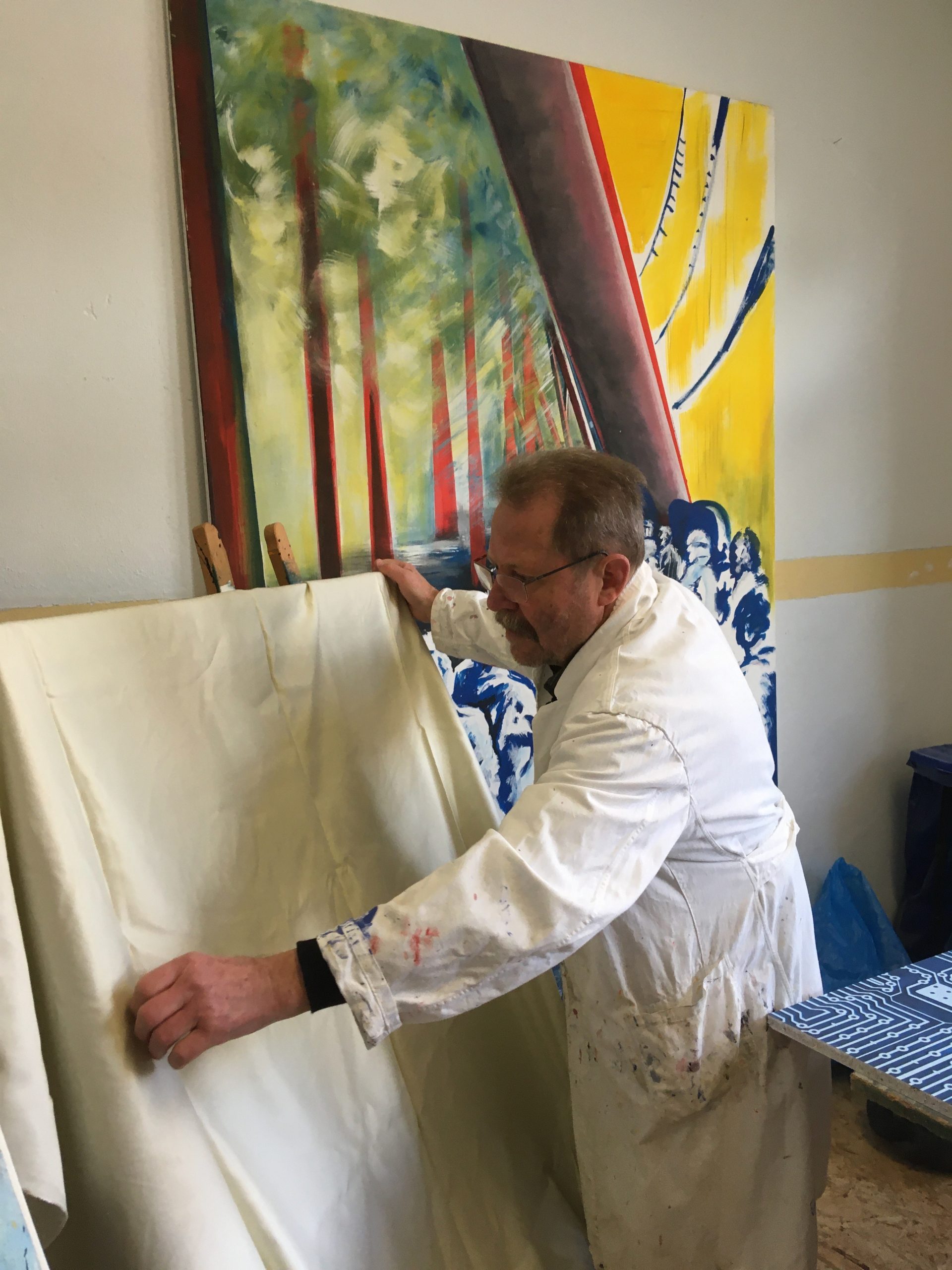Description
The textile
industry is one of the oldest forms of human production, which was extremely
labor-intensive and contributed to the significant influence of certain
regions.
The vegetable
raw material of wild plants, primarily flax, was processed and spun as early as
the Middle Ages in order to produce winter clothing or to secure another source
of income.
In addition to
the linen weavers also developed other tissues, such as, inter alia, the wool
blended fabrics Barchend what the Weber on the Laichinger Alb were particularly
known.
In the almost 40 years of my teaching position at the Realschule in Laichingen it was part of my job to familiarize the pupils with the special history of their school location and the courses in the local museum, in which the history of weaving on the Laichinger Alb, which is excellently prepared for museum education, was one of my regular compulsory events.
Intention
The topic is an important part of European cultural and industrial history, which can be used as an example to show how work in rural areas has developed over centuries and how this development determines the life of the individual and the community and how this development affects cultural, social and has influenced and changed economic relationships and structures, from “simple” flax breaking by hand to computer-controlled processing with highly complicated machines in the 20th century. I think it is important that young people in particular develop an awareness of history and that they are aware of the fact that the life they are to live and that they are used to, does not come out of nowhere, but that they participate in a comfortable life, for which millions before them made sure that this will be reality!
Beschreibung
Das Textilgewerbe gehört zu den ältesten Formen menschlicher Produktion, die ausgesprochen arbeitsintensiv war und zu wesentlichem Einfluss bestimmter Regionen beitrug.
Der pflanzliche Rohstoff wildwachsender Pflanzen, in erster Linie Flachs, wurde schon im Mittelalter verarbeitet und versponnen, um daraus Winterkleidung herzustellen bzw. eine weitere Einnahmequelle zu sichern.
Neben dem Leinen entwickelten die Weber auch noch andere Gewebe, wie u.a. das Wollmischgewebe Barchend, wofür die Weber auf der Laichinger Alb besonders bekannt waren.
In den fast 40 Jahren meiner Lehrertätigkeit an der Realschule in Laichingen gehörte es u. a. zu meiner Aufgabe, die Schülerinnen und Schüler mit der besonderen Geschichte ihres Schulortes bekannt zu machen, und auch die Lerngänge ins Heimatmuseum, in dem die Geschichte der Weberei auf der Laichinger Alb museumspädagogisch hervorragend aufbereitet ist, gehörten zu meinen regelmäßigen Pflichtveranstaltungen.
Außerdem ist Leinwand für mich als bildender Künstler ein bedeutendes Arbeitsutensil. Sie ist meist Träger meiner Malerei (siehe Foto!).
Absicht
Das Thema ist ein wichtiger Teil europäischer Kultur- und Industriegeschichte, an dem exemplarisch aufgezeigt werden kann, wie sich Arbeit im ländlichen Raum über Jahrhunderte entwickelt hat, wie diese Entwicklung das Leben des Einzelnen und der Gemeinschaft bestimmt und wie diese Entwicklung die kulturellen, sozialen und wirtschaftlichen Zusammenhänge und Strukturen beeinflusst und verändert hat, vom „einfachen“ Flachsbrechen von Hand bis hin zur computergesteuerten Verarbeitung mit hoch komplizierten Maschinen im 20. Jh. Ich finde es wichtig, dass vor allem Jugendliche ein Geschichtsbewusstsein entwickeln und sich bewusst sind, dass das Leben, das sie gerade leben und das sie gewohnt sind, nicht aus dem Nichts kommt, sondern dass sie an einem komfortablen Leben partizipieren – Millionen Menschen vor ihnen haben dafür gesorgt, dass es dies gibt!
Lesen Sie mehr über die Bedeutung der Leinenweberei im Laufe der Jahrhunderte


